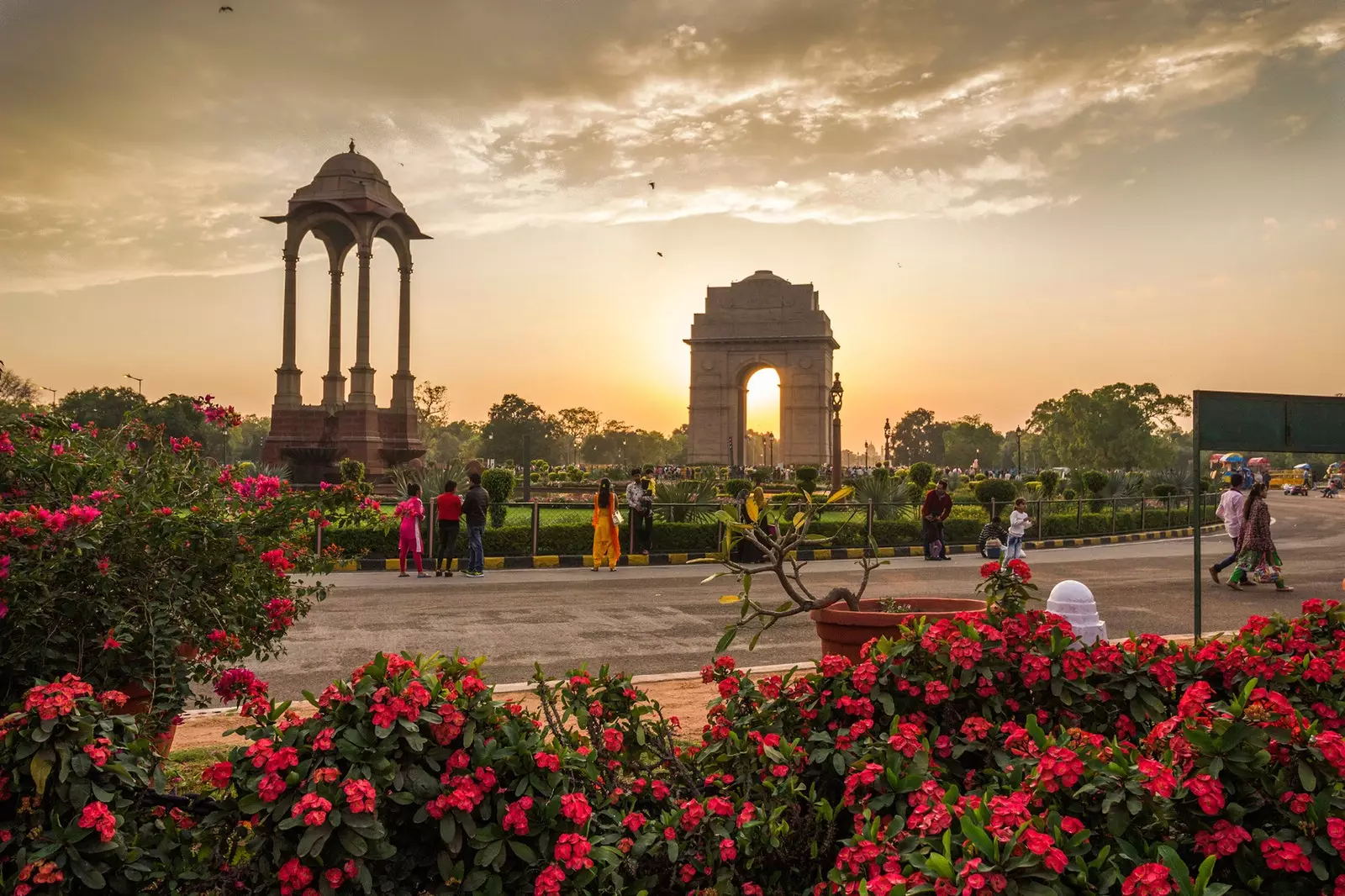
indian gate
The new part of the city, colonial heritage of the British, and the labyrinthine streets of the old town coexist offering the traveler a unique experience.
To know Delhi you have to move to the rhythm of the city and get carried away by the human waves that do not stop.
Two reddish structures stand out from the winding alleys of Old Delhi: the red fort (emblem of Mughal hegemony) and the amazing Jama Masjid mosque. It is the largest in India and the last dream of Emperor Sha Yahan, the same one who ordered the construction of the Taj Mahal.
The red sandstone and white marble of its three gates, four towers and two 40-meter minarets built in 1658 are today background for the numerous selfies that Hindus come to take in the surroundings of the temple.
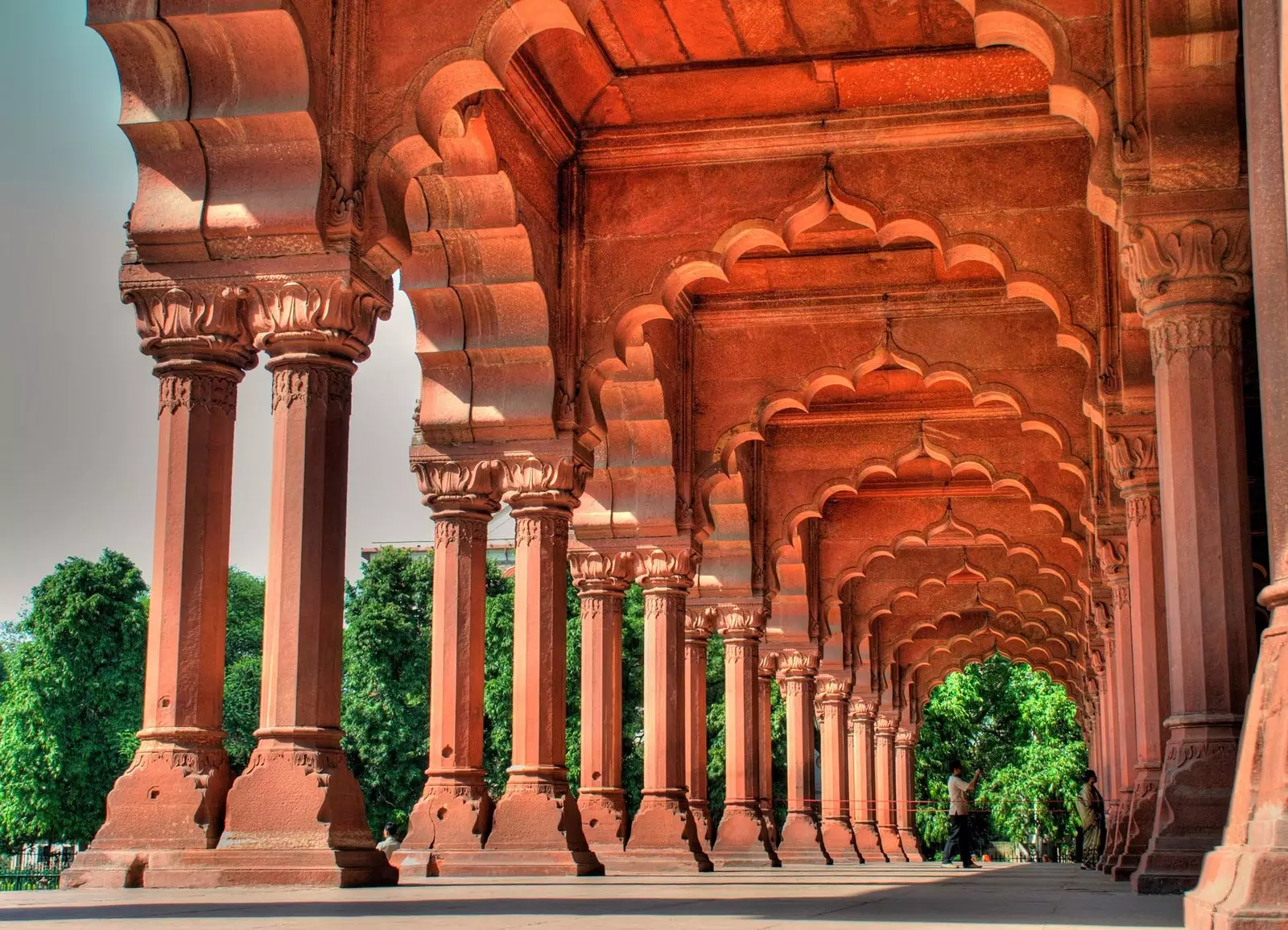
The Red Fort (emblem of Mughal hegemony)
Traffic regulations exist in India, although nobody respects them. At any crossroads in any corner of Delhi you can find dozens of motorcycles, rickshaws, tuk tuks, cars, bicycles, buses, wagons pulled by men or animals...and pedestrians.
The traffic lights are decorated and the zebra crossings to decorate the outdated asphalt.
This madness causes four people a day to die in traffic accidents in the capital. Last year alone, 1,604 people died and 5,800 were injured after embarking on the adventure of drive in this chaotic city.
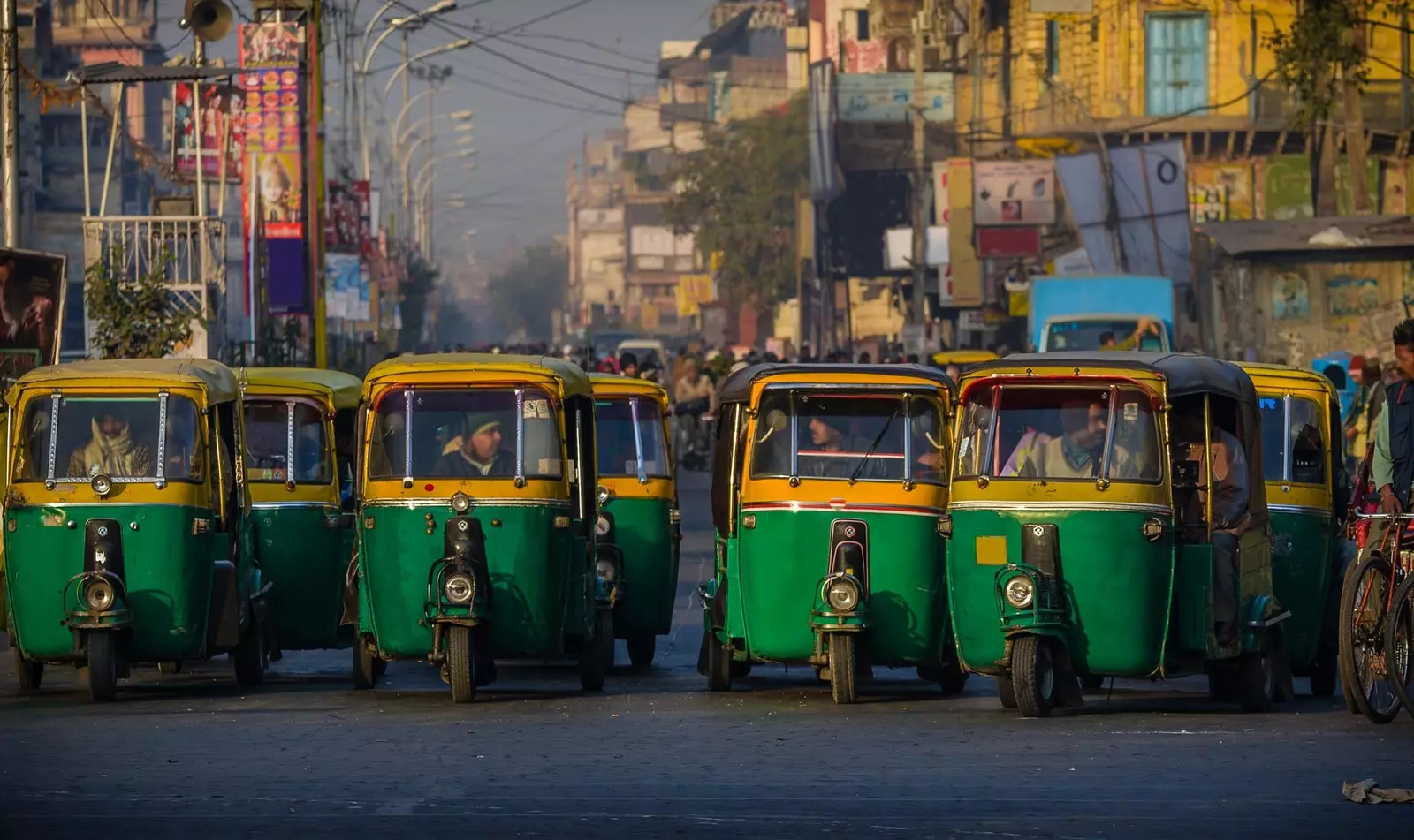
Tuk tuk gathering
Walking around Delhi you will see many men with turbans: the Sikhs. Underneath it hides, in addition to very long hair that has never been cut, a religion with more than 500 years of history.
Sikhs are one of the largest religious communities in India. They believe in a single pantheistic God (present in all things) without concrete form. The turban distinguishes his faithful.
What originated as a symbol of royalty, a king's crown, has finally become an item of masculine coquetry. The fabric must be 9 meters long and rolled up every day. At least every Sikh spends 20 minutes a day to assemble the turban.
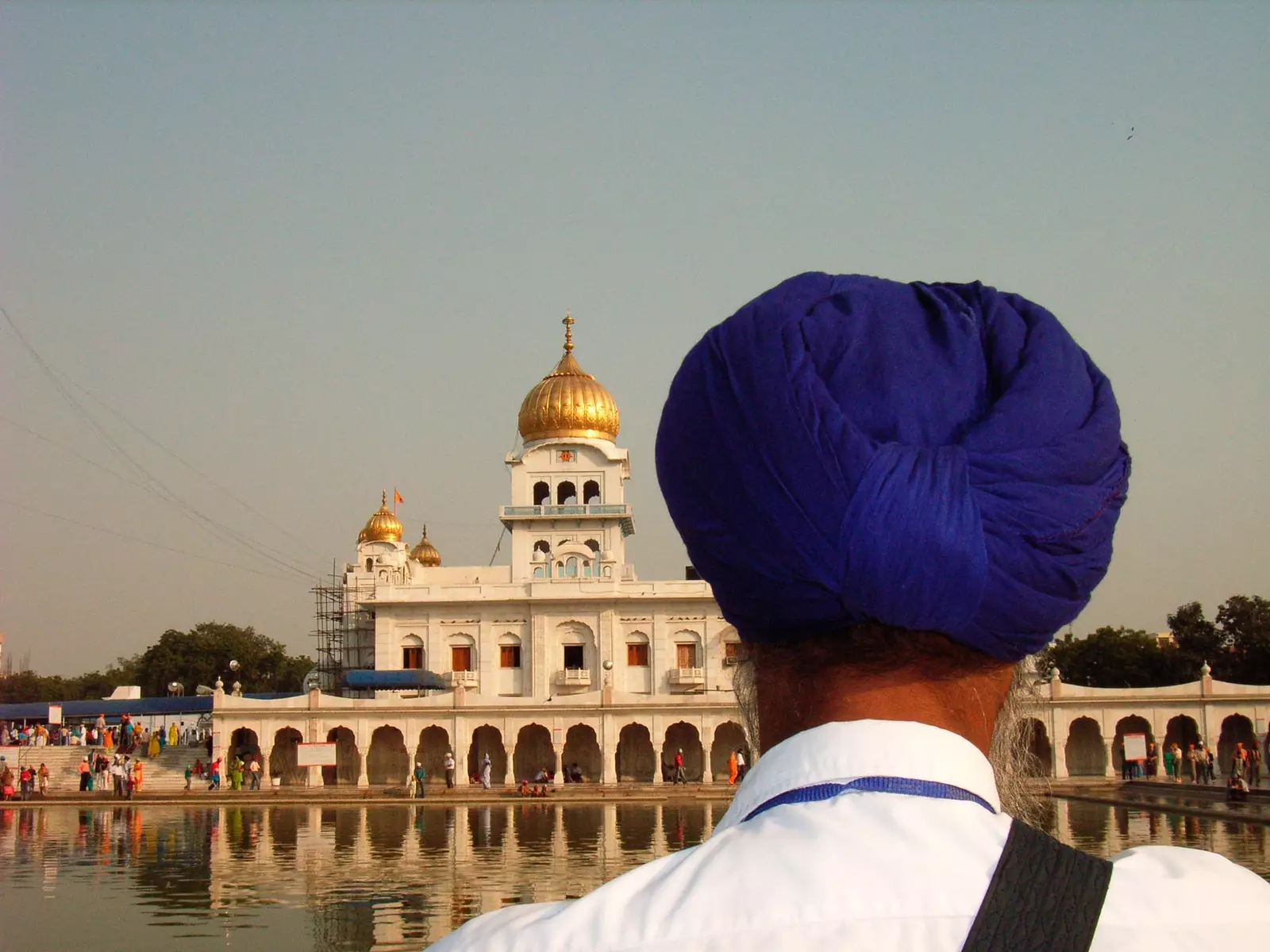
Sikh looking towards Gurdwara Bangla Sahib
The Gurdwara Bangla Sahib It is the main Sikh temple in Delhi. Located very close to Connaught Place, it is one of the places of pilgrimage for the faithful. houses a copy of the holy book and serves as a meeting place for veneration.
All Sikh temples have communal kitchens. in the of Guru Bangla Sahib you can taste a thali made up of a lentil stew with potatoes and bread.
A woman sweeps the landscaped corridor that brings peace and quiet in the Raj Ghat, the mausoleum dedicated to Mahatma Gandhi.
Despite the indian woman, especially in the cities, she has achieved progress that is far from what they have in the rural world, There is still a lot to legislate. They cannot inherit, those who work earn less than men and, in most situations, their marriages are arranged by their parents.
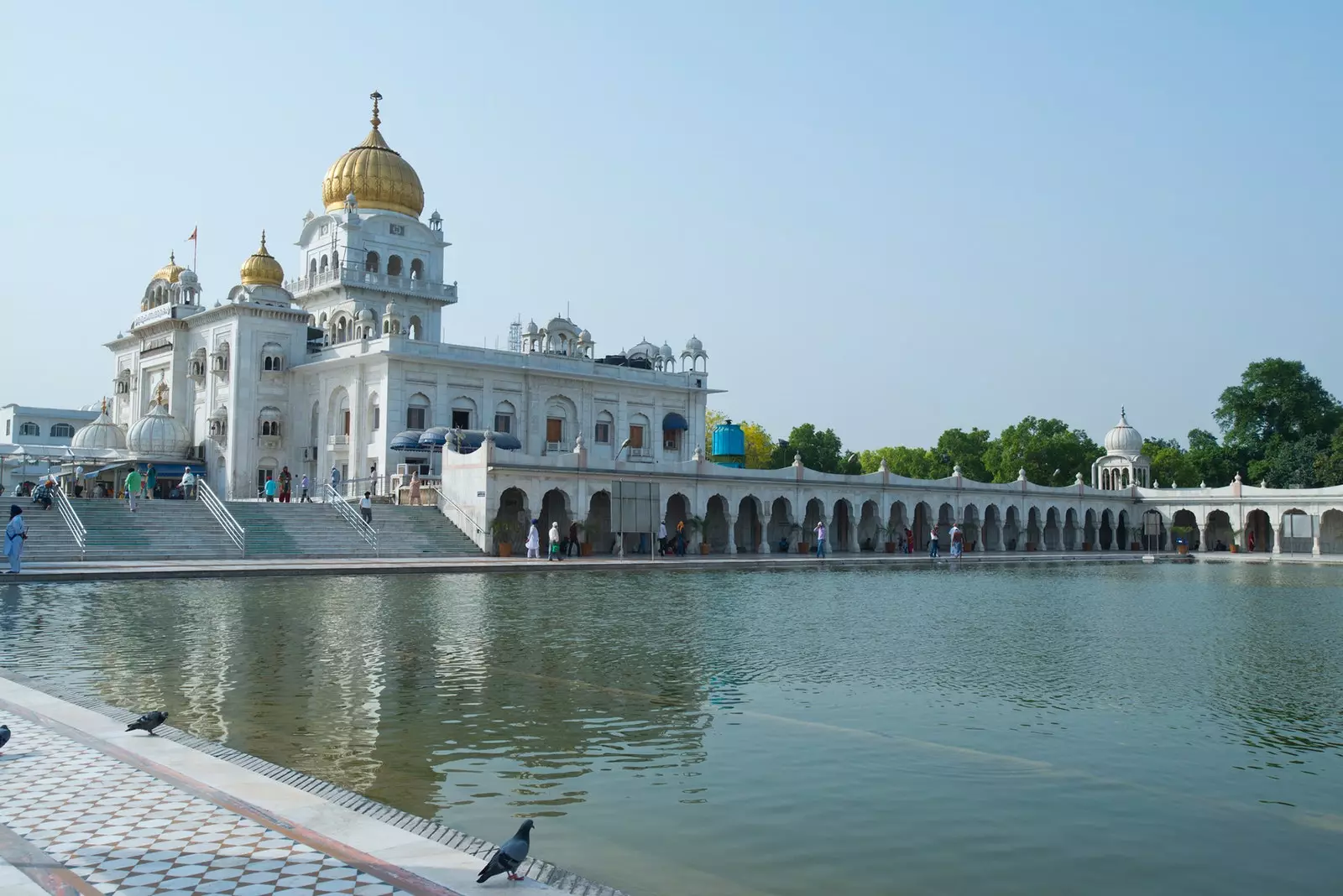
Gurdwara Bangla Sahib
Ideal retreat from busy Delhi, Humayun's Tomb is said to have been the inspiration for the Taj Mahal. Emperor Humayun had this beautiful mausoleum built for his wife Haji Begum.
Built in the 16th century and surrounded by geometric gardens, it tried to represent architectural perfection and earthly beauty.
Inside are buried the emperor and his wife that he walked and breathed the incredible tranquility that the place transmits that ended up becoming his own tomb.
Between ruins, cars, motorcycles and monuments, you will also find many examples of the new modern and current Hindu society, that looks up to the future without forgetting the vestiges of the past.
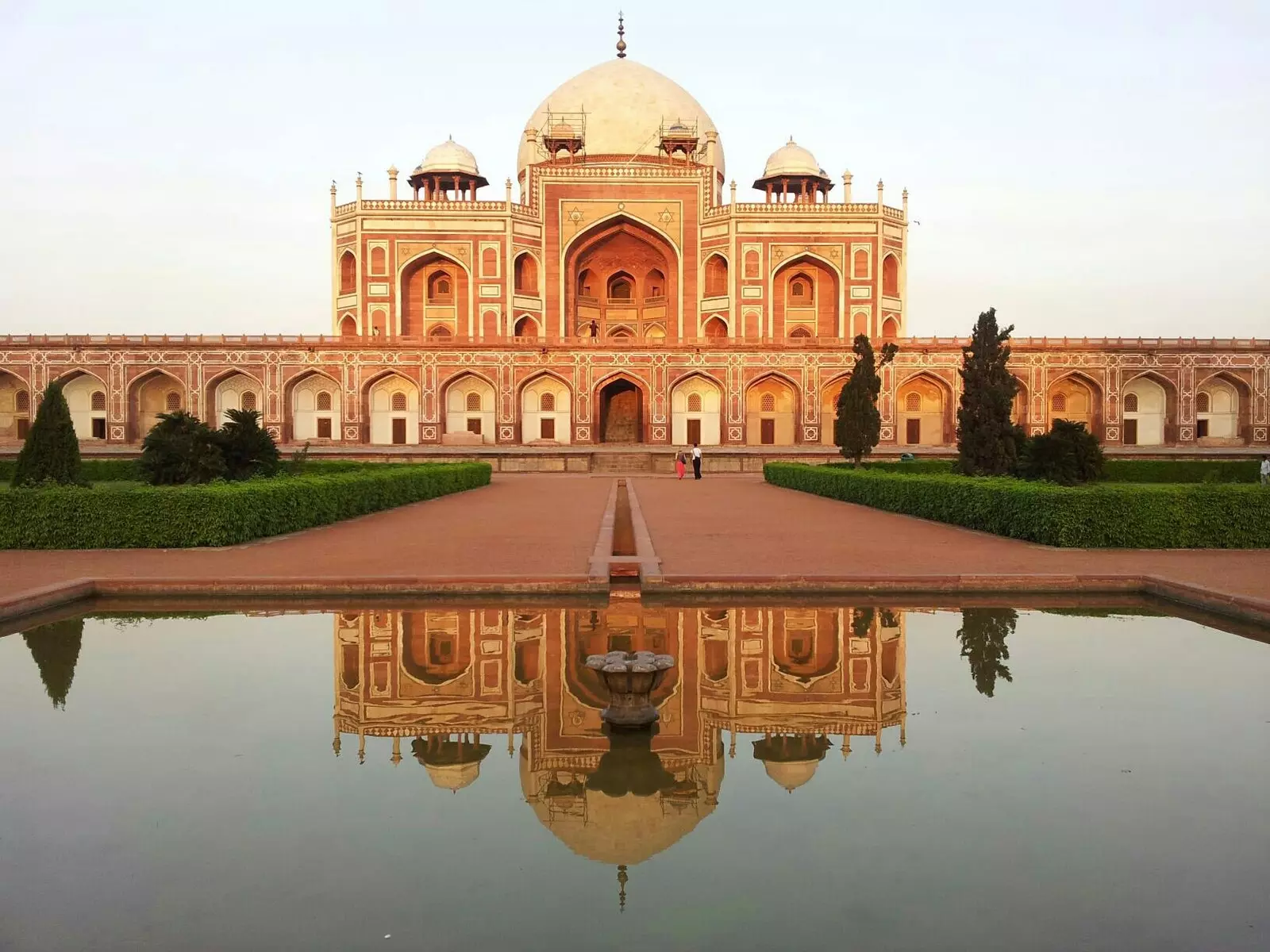
Humayun's Tomb
And, precisely, one of the best legacies of the past are the imposing monuments that populate the enclosure of one of the first Islamic constructions in India, the Qutb Minar.
One of the places most picturesque and attractive of the capital, raised 13 kilometers to the south over the metropolitan area.
Almost 73 meters high, stands out the Victory Tower, the highest in the country and one of the highest in the world.
Its construction began immediately after the fall of the last Hindu kingdom of Delhi in 1193. Between October and November, for a week, the Qutb Indian classical music and dance festival.
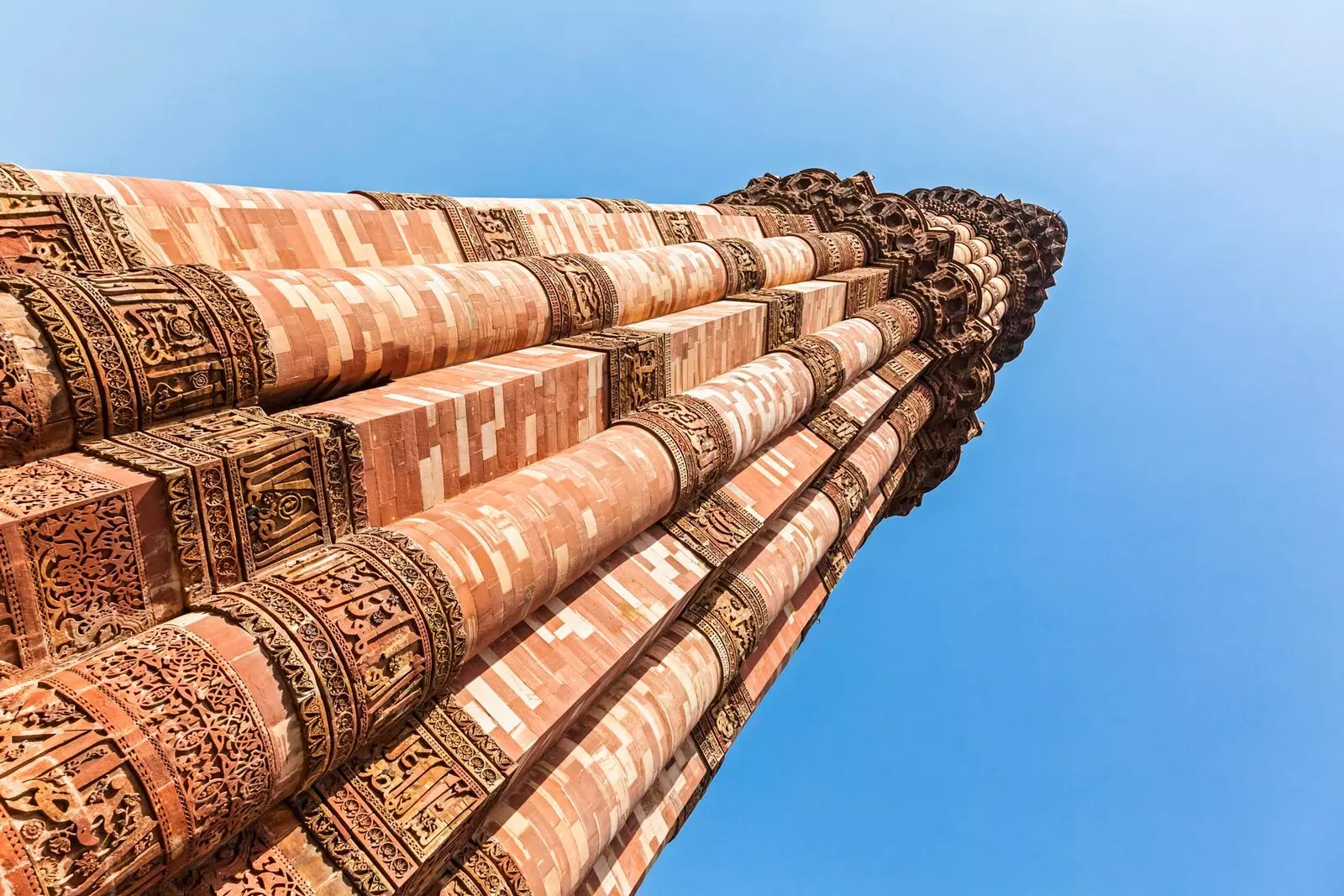
The Victory Tower is the tallest in the country
Thousands of people mill around the India Gate or India Gate, where the Rajpath (Royal Road) ends. One of the most representative monuments of Delhi designed by the British architect Edwin Luties.
On weekends and holidays it becomes a real fair. The area is not only invaded by tourists, who come en masse, but also by Hindu families and couples who stroll around the monument where the most unique stalls coexist: from the ear or mouth cleaning service, sale of soap bubbles, umbrellas or the typical 'souvenirs'.
A chaotic and genuine place where it stands a 42-meter-high arch that pays tribute to the 90,000 Indian soldiers who died in World War II.
Their names are inscribed on the walls. From here, Every January 26, many witness the Republic Day parade.
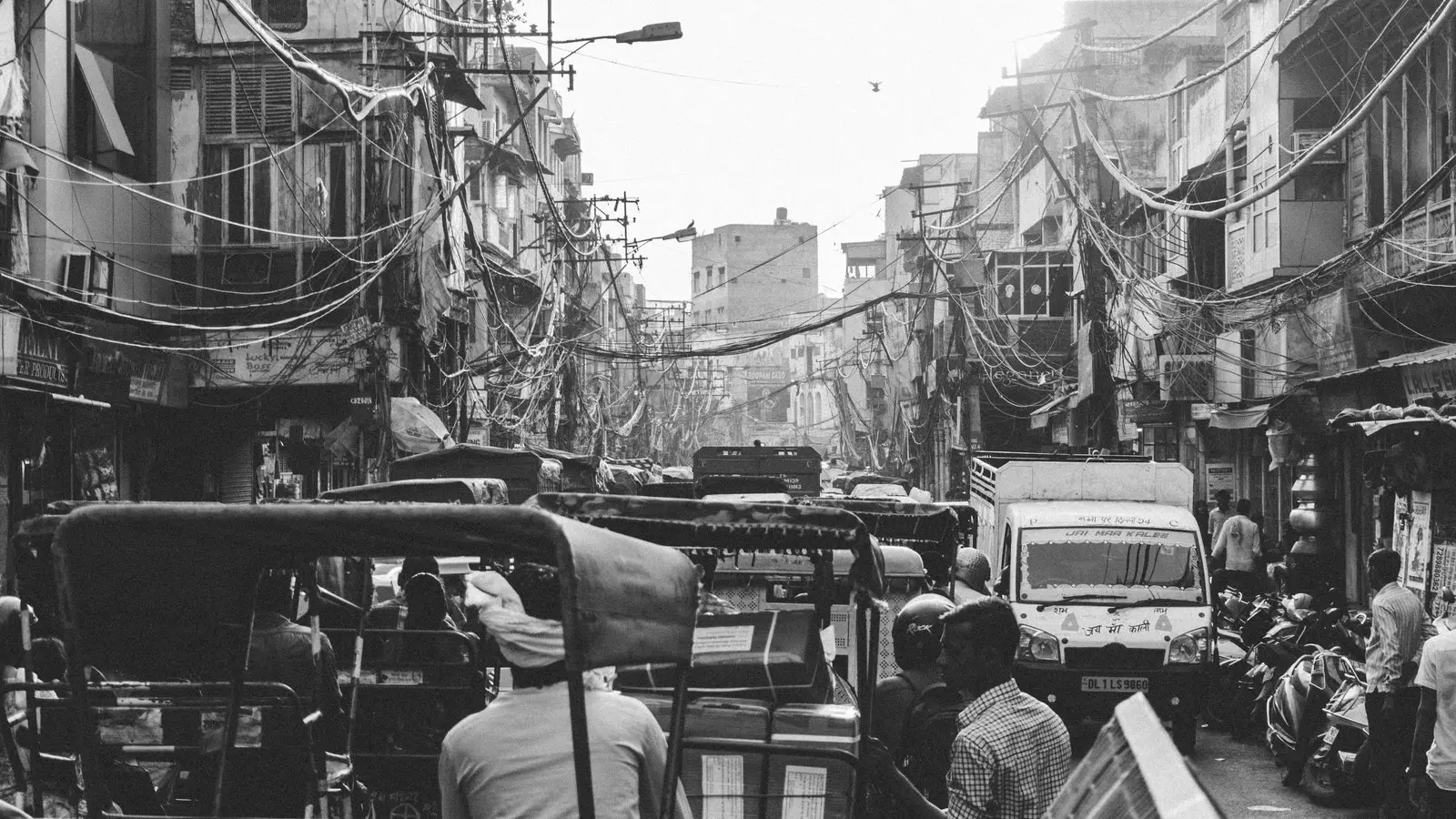
An ordinary day on the streets of Delhi
You cannot leave India without saying hello to one of its most precious symbols: the Bust of Mohandas Karamchand Gandhi, better known as Mahatma (Great Soul), leader of the nationalist movement in India and world leader.
Is he pride of the population, to which he encouraged fiscal disobedience and a boycott of British institutions and products.
It has been 67 years since his assassination but he is revered with the same intensity that India mourned his death. In fact, all the bills bear his face.
In the heart of Old Delhi, there is a must-see Gandhian National Museum.
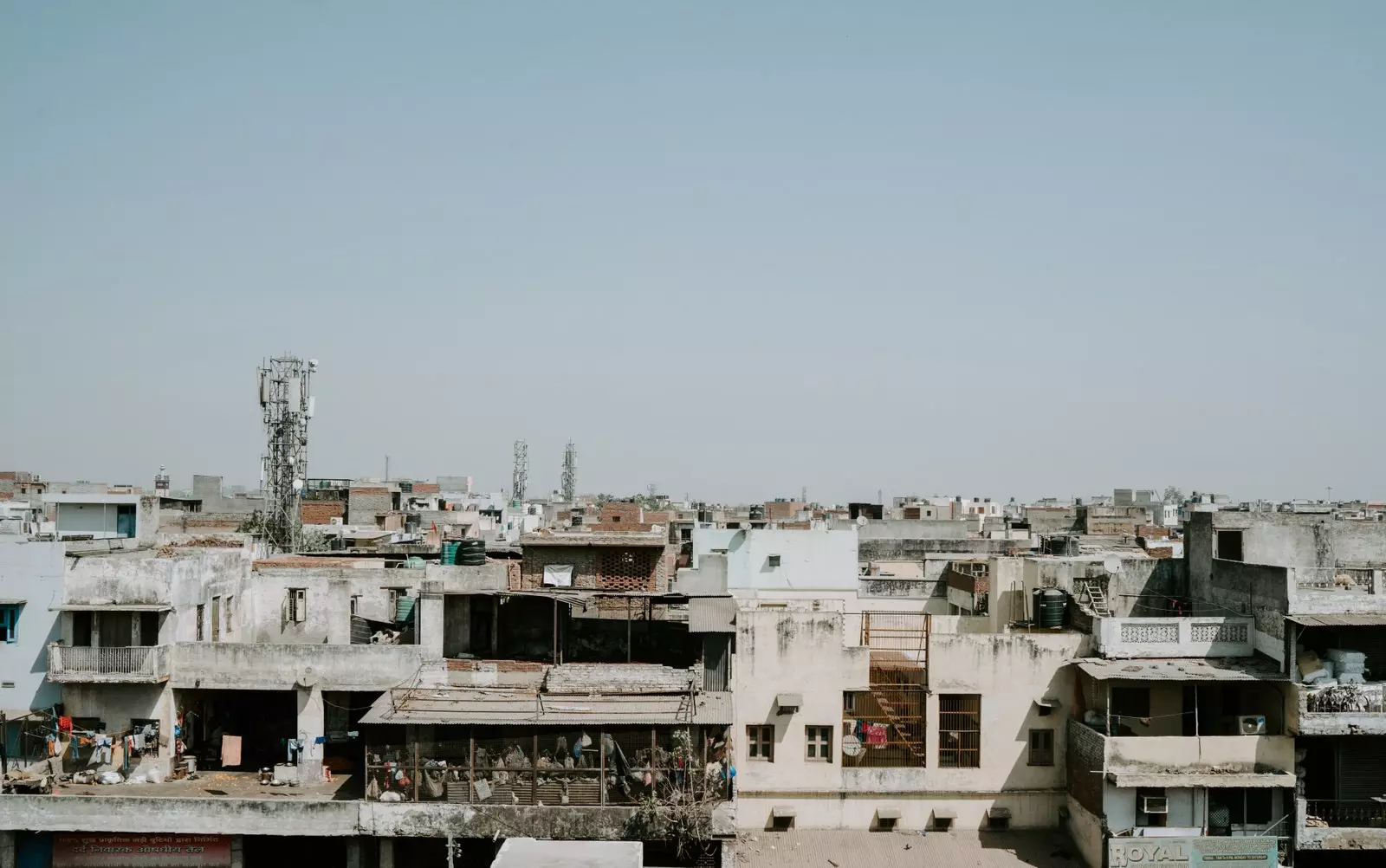
Old Delhi in New Delhi
And we get back into the noise, the traffic and the chaos in the main artery of Old Delhi: Chadni Chowk. But above all, merchandise. Throughout these streets, and at every turn, there are tiny shops with all kinds of items and offers. Venues that offer a wide variety of saree, typical national female clothing, and beads.
You have to walk with a thousand eyes, especially because of the intense traffic that circulates here, because it is permanently bottled up.
Nothing to do with the tranquility that was breathed when luxury mansions and merchant houses predominated in Mughal Delhi. Now, McDonalds rivals the stalls of bracelets, incense and spices.
"It is not recommended for everyone since drugs and sinister characters circulate in its streets." That's what the Lonely Planet says Paharganj neighborhood. However, our experience is completely the opposite.
This area of Old Delhi is full of cheap and comfortable hotels, restaurants that mix Indian and Western food and reliable travel agencies to hire excursions, drivers or get tickets with which to travel around the country.
In addition, its proximity to the train station makes it highly recommended. for those who have decided to travel the country with a backpack on their shoulders.
*follow the adventure of **** Travel and Rock _ in Traveler.es. First stop: Delhi; second stop: Udaipur; third stop: Pushkar; fourth stop: Jaipur; fifth stop: Agra; sixth stop: Varanasi._
